#nagayoshi miyoshi
Explore tagged Tumblr posts
Photo
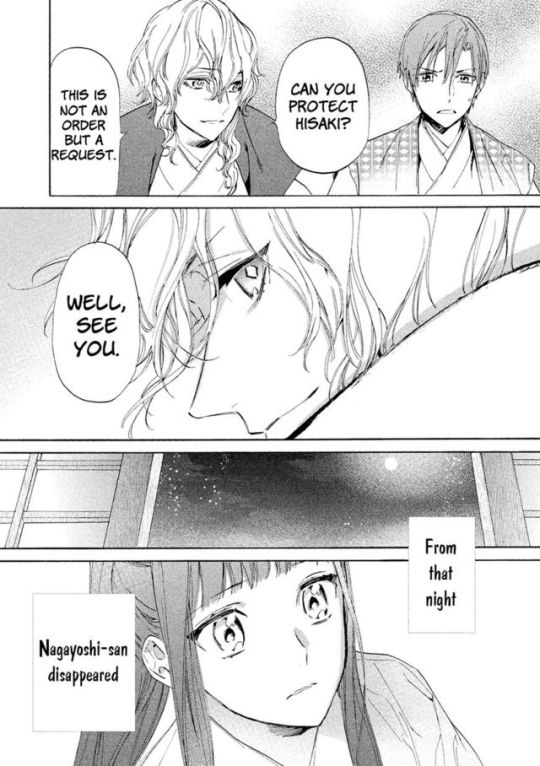
Sengoku Vamp ch10
3 notes
·
View notes
Text
Nobunaga hates "Kyoto cuisine”?
The source of this story is a text called Buhenbanashi Kikigaki 武辺咄聞書 written in the mid to late 1600s, and Jouzan Kidan 常山紀談, written around mid-1700s.
The story says that there is a man called Tsubouchi Sekisai. He used to serve as hōchōnin 庖丁人 for the Miyoshi clan. He was captured as prisoner, but was later released. He was then recommended to Nobunaga because he’s skilled in preparing high class cuisine. Nobunaga agreed to let the man try. However, the Nobunaga found the meal to be “watery” and distasteful, so he wishes to kill Tsubouchi. Tsubouchi asked for a second chance, and Nobunaga allowed him. The second meal was found to be pleasing, and Nobunaga praised him and rewarded him.
Tsubouchi then remarks: “Yesterday’s meal was cooked in the style preferred by the Miyoshi, but today’s meal was a vulgar third rate dish. The Miyoshi has served the shogun and managed the national affairs for 5 generations, so they have class. Today’s food is vulgar and provincial in style, so of course it suits your taste”.
That’s all well and good, but there’s problems with this story, which arouses doubt about its factuality. The person Tsubouchi in question is possibly fictive, and the narrative is possibly faulty.
The argument presented for why this narrative is faulty is that hōchōnin aren’t actually supposed to cook, so Nobunaga asking this person to have a go at cooking is somehow weird. Apparently they're more of a kitchen overseer and some sort of event organizer for banquets. However, they are able to cook, as they’re traditionally in charge of training the rank and file cooks, as well as preparing ceremonial/ritualistic cuisine. I can’t say how valid this argument is, since the minute details of what a hōchōnin’s role and status are supposed to be is beyond me.
There is apparently a very detailed account of Miyoshi Nagayoshi hosting a banquet for Shogun Yoshiteru in 1561, and there’s nobody named Tsubouchi in the list of vassals in charge of or attending the event. This part seems like a reasonable cause for doubt. Tsubouchi not existing would kind of make you wonder what actually happened, and why this fictive person is named.
[Research source: https://bimikyushin.com/chapter_4/04_ref/tsubouchi.html]
14 notes
·
View notes
Text

https://youtu.be/U7eowkr7I8M
Four years have passed after the Battle of Okehazama in which Nobunaga defeated Imagawa Yoshimoto. Nagayoshi Miyoshi seized power in Kyoto, and Shogun Ashikaga Yoshiteru became a puppet. As a supporter of Yoshiteru—who completely lost motivation and became a different person—Mitsuhide is summoned to Kyoto by Fujitaka and others, promising to bring Nobunaga—who is rapidly gaining momentum—to the capital in order to restore the Shogun’s power. Meanwhile, Kōma gets in a dispute with Tōan over the manufacturing of a new medicine, and leaves the clinic. Kōma goes to Yamato with Iroha Tayu, and becomes interested in Kakukei (later known as Ashikaga Yoshiaki), who gives to the poor people.
Kirin ga Kuru episode 22 preview
10 notes
·
View notes
Text
🌟Sengoku Vamp🌟
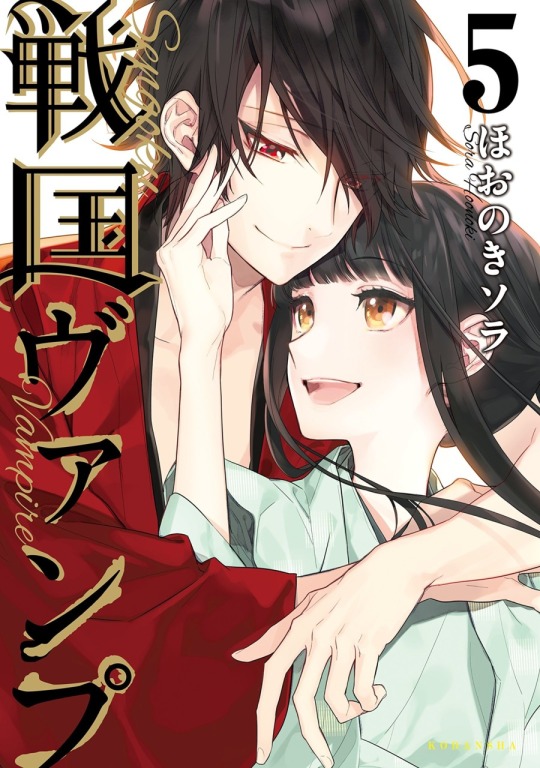
Alternative title : Sengoku vampire
Author : Hoonoki Sora
Synopsis : Our protagonist, Hisaki has time slipped 450 years back to the Sengoku Era! Upon arrival she is greeted by Miyoshi Nagayoshi, a vampire. What on earth will happen to her now? Vampires, samurai, and a high school girl; a forbidden love though time begins!
Genre : romance, action, fantasy, Isekai(?), time travel and shoujo.
Where to read : mangadex.org
6 notes
·
View notes
Text
Matsunaga Hisahide facts!
I thought it might be fun to compile some of the information I have learned about Matsunaga Hisahide into one post. If anyone would like more information beyond what is summarized in this post, feel free to contact me, and I can provide you with more.
#1.) Hisahide was a retainer to Miyoshi Nagayoshi, also known as Chokei. Chokei’s heir Yoshioki died under mysterious circumstances, and it is theorized that Hisahide may have poisoned him. Additional deaths he may or may not have been involved in include three of Chokei’s brothers and possibly Chokei himself; thus, Hisahide was well on his way to living up to the idea of gekokujou, a term used to describe someone of lower status upheaving someone of higher status (1, 2)
#2.) After the Miyoshi heir’s death, the next clan head was too young to rule, so authority fell to the Miyoshi Triumvirate who were also manipulated by Hisahide to an extent. Together, they coordinated a siege attack in Kyoto that resulted in the shogun Ashikaga Yoshiteru's forced suicide (3). Hisahide also had conflicts with the Miyoshi Triumvirate that were further polarized by the arrival of Oda Nobunaga (Elison and Smith, 1981).
#3.) Hisahide is notorious in the annals of history for burning down the Todai-ji temple which contained the Great Buddha daibutsu-den. However, Missionary Luis Frois claims that Hisahide did not burn down Todai-ji, but rather, it was a Christian samurai who acted independently while the Miyoshi were stationed there. I, however, am a bit skeptical of this claim of his innocence since Hisahide had reasonable motivations to be involved in the incident (4; 5; Elison and Smith, 1981). This comprises the last of the “Three Evils” Nobunaga condemned Hisahide for - killing the shogun, revolting against his Miyoshi lords, and burning Todai-ji (6).
#4.) Hisahide occupied Shigisan Castle and built a castle of his own - Tamon Castle (Elison and Smith, 1981). An artist’s depiction of what Shigisan Castle may have looked like can be seen here. It was noted as being particularly steep and defensible (5). As for Tamon Castle, it is alleged that it contained Japan’s first tower keep, but I personally am uncertain as to the validity of this claim (4).
#5.) Hisahide was frequently invited to Noh performances and other ceremonies by Oda Nobunaga (5). It was allegedly after one such performance where Hisahide was in attendance that Nobunaga received word of his brother-in-law Azai Nagamasa turning against him. Hisahide advised Nobunaga to retreat away from Kyoto, and it is said that this was made possible by Hisahide convincing a castle lord in Omi to assist them with Hisahide being fully prepared to kill him should he refuse (7; 8).
#6.) Hisahide may not be quite the evil villain he is portrayed to be... Letters from Nobunaga indicate that his son Matsunaga Hisamichi was actually the troublesome one. Hisahide apparently offered Nobunaga gifts of swords to appease him when Hisamichi would do something that angered him. Hisamichi was also forced to cede Tamon Castle to Nobunaga (5). Additionally, Nobunaga had suspected the infamous Matsunaga revolt against him that resulted in Hisahide's death was instigated by Hisamichi (6). Because of this, Nobunaga is recorded as having executed two of Hisamichi’s sons in an attempt to force compliance (5). Different accounts exist regarding the manner of death of Hisamichi as well as his brother Kojiro, though it appears as though some of Hisahide’s descendants may have survived, with several political and military figures in modern-day Japan claiming Yamato Matsunaga ancestry.
#7.) The famous Sengoku Era physician Manase Dosan appears to have written a sex manual for Hisahide with the specific purpose of how to use sex to benefit one’s health (9). What interests me about this manual is that it has several passages devoted to how to best please someone with a clitoris/vagina.
#8.) Hisahide invited Jesuit missionary Gaspar Vilela to a debate with two respected scholars - the astronomer Yuuki Yamashiro-no-kami Tadamasa and the Confucian tutor Kiyohara Ekata. Gaspar impressed them so much that they converted to Christianity. Gaspar’s escort to the debate, Takayama Tomoteru, also converted, and he raised his son Ukon in the Christian faith. Ukon is currently in the process of potentially becoming a saint recognized by the Catholic church. Some accounts alledge that Hisahide also converted, but I think it is more likely he remained a member of the Nichiren sect of Buddhism despite any superficial Christian indications he may have given (10; 11; 12).
#9). Hisahide led attacks against the Tsutsui clan, the clan Shima Sakon served before entering the service of Ishida Mitsunari. (13). This in part led to the decline of the Tsutsui clan. After Hisahide’s death, the embittered clan head Tsutsui Junkei razed Tamon Castle in what many interpret to be an act driven by the motivation to erase any traces left of Matsunaga Hisahide (14).
Book Source: Elison, George and Smith, Bardwell. Warlords Artists and Commoners: Japan in the Sixteenth Century. University of Hawaii Press, 1981.
#matsunaga hisahide#hisahide matsunaga#sengoku basara#samurai warriors#sengoku musou#fun facts#nexu talks#long post#hisahide
10 notes
·
View notes
Text
My Manga List (2019) Part 1
So many beautiful reads this year! The theme for part one is isekai, reincarnation, time travel and etc types of stories so carry on ~
I Swear I Won’t Bother You Again!
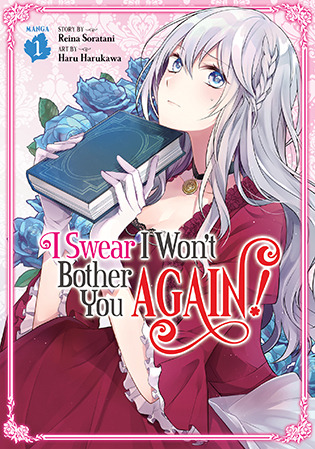
Summary:
Violette, daughter of a duke, committed a terrible, jealous crime against her half-sister. As she languishes in prison, something unexpected happens: time is rewound, sending her back to the day her problems began! Armed with the memories of her disastrous first go-round, Violette is determined to live a quiet, unobtrusive life…but fate has something else in store!
WHY YOU SHOULD READ:
- plot = 5/5
- art style = 5/5
- ngl but this is one of the well written isekai/time travel stories for me hence the ratings
- you would actually emphatize with the mc (violette) despite her earlier actions bcuz her intentions/motivations are clear
- the ml treats the mc so well
- they are all good looooking
- the ml and the friend/maid of the mc is very supportive
- you will hate the villains (there’s no actual villain tbh, just random ppl who makes her life harder intentionally or not intentionally like the prince and the sister)
- the mc is aware of her wrong doings and she’s trying to change that yay
- good looking character designs hihihi
- yulan x violette
- anyway, more than a romance. this actually kinda focuses more on the mc’s road to changing with romance? sparkling it. Romance is not her priority, it’s not even on the list so it’s going to take some time before mc and ml get together
- to conclude: read this if you want a good, slow burn type of story with aesthetically pleasing to the eyes characters
The Result of Being Reincarnated is Having a Master-Servant Relationship with the Yandere Love Interest
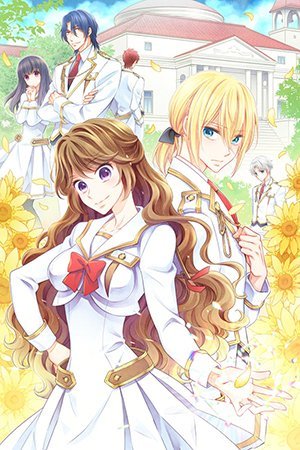
Summary:
I was reborn as a Viscount's daughter, Cecil, in a very unexpected otome game where all of the love interests are Yanderes. However, Cecil, being the rival character in the game, was killed in every route by the chosen love interest. Furthermore, wishing to have a long life, Cecil meets Ashley who will be her servant and... he's one of the Yandere love interests...?!
WHY YOU SHOULD READ:
- the title is so long it basically revealed the theme of the story lmao
- mc is dense in a cute kind of way
- plot = 3/5
- art style = 4/5
- the ml... hmmm... ngl but his appearance on the recent chap is not doing it for me (spoiler: consent is important my friends)
- interesting and promising story line bcuz how much is the truth about the otome game
- the ml was - is very cute
- side characters are okay especially the president who is like the one person who’s thinking straight cause YANDARES ARE DANGEROUS OKAY
- overall, the plot and the art style is decent read although bit nervous and reluctant bcuz almost all the characters are yandare. the relationship between the ml and mc is cute too, and the story has potential
I was Reincarnated, and now I'm a maid!

Summary:
Yulia is reincarnated in a world set before the start of an otome game. She started working as a maid in the castle, but she is serving the princess who appears as a villain in the game! "I won't let this cute princess become a villain!" Rumored as a tough, impregnable maid, she herself will make sure to show the princess happiness! She will use her knowledge of her previous life and the life of magic to change the future of the game is what she thought, but for some reason, a knight who showed interest in her appears! Not taking falling in love into consideration, follow this talented maid through her fantasy!
WHY YOU SHOULD READ:
- the title speaks for itself lmao
- plot = 3/5 bcuz it has only like 1 chap so i cant be sure but it has a cute and promising start
- art style = 4/5
- basically the mc is so cute bcuz she just wants to protect her masterr and future villain of the otome game
- to end, i can’t say much but it has a really promising and interesting start w/ a touch of mystery since idk if the romance is gonna be relevant.
Sengoku Vamp
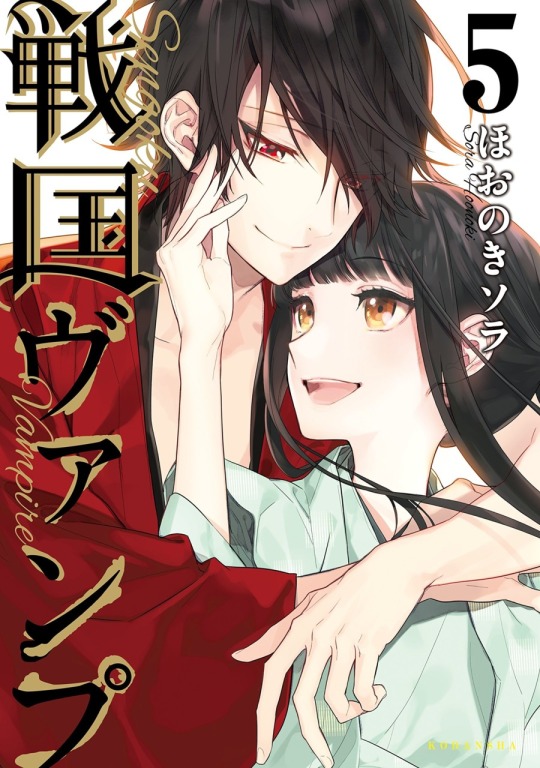
Summary:
Our protagonist, Hisaki has time slipped 450 years back to the Sengoku Era! Upon arrival she is greeted by Miyoshi Nagayoshi, a vampire. What on earth will happen to her now? Vampires, warriors, and a high school girl; a forbidden love though time begins!
WHY YOU SHOULD READ:
- v a m p i r e s
- plot = 3.5/5
- art style = 5/5
- the mc is super cute
- bunch of mysteries
- the ml kinda reminds me of miyamura from horimiya idk why
- cute and promising
- overall, if you had a thing for vampires and twilight saga then you’re also gonna enjoy this.
The Reborn Witch Foretells Destruction

Summary:
High school student Sena Shirai is just about to leave behind her shut-in lifestyle and join the outside world, when she becomes the victim of a traffic accident. When she opens her eyes, she's somehow been reborn into a fantasy world! However, everyone around her fears her as a witch, so she reverts to her former habits and lives a lonely life in the woods, until one day when... a young man comes to see the witch?!
WHY YOU SHOULD READ:
- plot = 5/5
- art style = 5/5
- this one is high on my list hence the ratings hehehe
- few chaps but the story is promising and leaves a lot of room for twists bcuz it has m a g i c involve
- the ml treats the mc so well i mean he cooks and didnt invalidate her!!
- mc is so cuteee and i love how she gushes about things she likes
- the predicament of the mc is understandable
- m a g i c
- m y s t e r y
- overall, read this bcuz it’s awesome and one of the few reincarnation/time travel/isekai type of story hihih the art style is so pretty and even the plot. the characters are also likeable
#manga#manga recommendation#shoujo#isekai#romance#the reborn witch foretells destruction#I was Reincarnated and now I'm a maid!#sengoku vamp#The Result of Being Reincarnated is Having a Master-Servant Relationship with the Yandere Love Interest#I Swear I Won’t Bother You Again!#yulan x violette#princesssehunnalist#reynlist#reyn.mangarecs
69 notes
·
View notes
Text
Sengoku Vamp.

Alternative : Вампир из Сэнгоку ; 战国吸血鬼 ; 戦国ヴァンプ
Sengoku Vamp summary: From Summer Rain: Our protagonist, Hisaki has time slipped 450 years back to the Sengoku Era! Upon arrival she is greeted by Miyoshi Nagayoshi, a vampire. What on earth will happen to her now? Vampires, warriors, and a high school girl; a forbidden love though time begins! #MangaFeeds.com, #ReadFreeMangaOnline MangaFeeds.Com: Read manga online the latest manga comic book, updated daily: https://mangafeeds.com/post/sengoku-vamp_1586205713
Read more.
0 notes
Photo



In 1564, Miyoshi Nagayoshi died of illness and Yoshiteru saw an opportunity to fully reclaim the shogun's authority. However, Matsunaga Hisahide and the three member council of Miyoshi, who wanted to rule just as Nagayoshi had, were willing to go to any lengths to remove Yoshiteru from the power and to have Ashikaga Yoshihide as the puppet shogun.
In 1565, Hisahide and Miyoshi Yoshitsugu laid siege against a collection of buildings (that would later become Nijō Castle) where Yoshiteru lived. With no help arriving in time from the daimyōs that could have supported him, Yoshiteru and the few troops under him were overrun. [Wiki]
9 notes
·
View notes
Photo

Sengoku Vamp - ch9
11 notes
·
View notes
Text
Nampō Roku, Book 3 (8): Concerning the Hora-dana [洞棚].

8) The hora-dana [洞棚]¹ was created by Imai Sōkyū².
Dairin oshō³ gave it the name hora-dana [ほら棚]⁴.
_________________________
¹Hora-dana [洞棚].
A late Edo period (or early-modern) copy of this tana is shown below.

This differs in several points from the sketch that is found in the Neisetsu-an Oboegaki [寧拙庵覺書], a work of Nampō Roku scholarship written by Tachibana Neisetsu [立花寧拙; ��~ 1745], a younger brother of Tachibana Jitsuzan.

Notable are the facts that Neisetsu shows the tana as more of a variation on the kyū-dai daisu [及第臺子] (from which it was derived) than the actual measurements suggest (the tana in the photograph conforms to those measurements); and that the peg from which the hishaku is suspended is attached on the outside of the left leg, rather than on the inside (as is the case with the tana that is shown above -- though, as Neisetsu notes, this variation was perfectly acceptable*).
These things aside, Neisetsu gives its measurements as:
- height, 1-shaku 6-sun 3-bu;
- thickness of the upper shelf, 4-bu;
- thickness of the lower shelf, 5-bu;
- the width of the interior (i.e., measured between the legs) 1-shaku 8-bu;
- the width of the shelves on the left and right, outside of the legs, 8-bu;
- a bamboo peg is nailed onto the side, to suspend the habōki and hishaku: Neisetsu writes that it does not matter if it is nailed on the inner side or the outer side (of the leg) -- both versions exist;
- the depth (front-to-back measurement) is 1-shaku 2-sun 5-bu*.
As for how this tana was to be placed on the utensil mat, as noted above, the Hora-dana was derived from the kyū-dai daisu. Thus, it was originally intended that the tana be placed on the utensil mat so that the mizusashi would continue to occupy the same place that it did when arranged on the kyū-dai daisu. Therefore, and as a parallel case to that of the Seirō-dana [城樓棚] (mentioned in entry 4) -- and, indeed, the fukuro-dana itself (which took its orientation, as the first non-daisu tana, from the place occupied by the mizusashi during the nanatsu-kazari [七つ飾]† on the shin-daisu) the Hora-dana is placed on the side of the mat closest to the ro.
Later, of course, this tana came to be centered on the utensil mat, as was true of the other tana that were handed down from the earlier periods.
Because the Hora-dana was derived from the kyū-dai daisu (which can only be used on a kyōma utensil mat), the utensils are arranged on it according to the five-kane system. ___________ *While Tachibana Neisetsu allows this variability, he seems to be unaware of the reasoning (which makes his sketch inaccurate).
The reference to the way the peg is attached to this tana, in Neisetsu’s commentary, reflects a basic misunderstanding of chanoyu in Jōō's and Rikyū's period by the chajin of the Edo period (and this is something that has to be kept in mind whenever reading Edo period explanations of things that were done in earlier periods). Neisetsu’s comments appear to be founded upon the idea that the orientation with the katte on the host's left (and, consequently, the ro on his right) was the original way that chanoyu was performed -- reflected by the Sen family's assertion that this was the hon-gatte [本勝手] (original or “true” position of the katte). In fact, this orientation seems to have started to gain a measure of currency only since the middle of the sixteenth century, perhaps reflecting the preferences of the Japanese military class. In the century and a half previous to that, the orientation where the katte is located on the host’s right (and the ro is on his left) was usual.
When the ro is on the host's right (the usual way things are done today), the peg on the Hora-dana is nailed on the interior of the left side of the tana (as it is in the photo). This is because the hishaku is picked up with the right hand, and accords with the rule that the peg should be located on the side “closest to the katte” (this is true not only for this and other oki-dana, but is also the rule with respect to the dōko).
However, when the ro is found on the host’s left -- in the manner employed by Jōō in his middle period -- the peg is nailed to the outside of the right side of the tana. This is because, once again, the peg still must be attached on the side closest to the katte -- yet, since the hishaku still must be lifted off the peg with the right hand, it would be impossible for the host to do this if the peg were on the inner side.
A Hora-dana such as shown in Neisetsu’s sketch (with the peg nailed on the outside of the left side of the tana) certainly never existed in Sōkyū’s day (even if one with the peg located as shown in the sketch was made in the Edo period). It is not, and never was, a matter of “personal preference” or something of the sort -- as Neisetsu suggested in his remarks: the peg is nailed where it will facilitate the host’s taking up the hishaku or habōki with his right hand.
†Nanatsu-kazari refers to the case where the furo and kama, mizusashi, shaku-tate containing the hishaku, koboshi, and futaoki, are arranged on the ji-ita of the shin-daisu. “Nanatsu,” in this secret teaching, refers to these seven utensils.
²Imai Sōkyū [今井宗久].
There is a certain amount of doubt over to whom the creation of this tana should be ascribed. Surviving examples from the Edo period state that this tana was created by Tsuda Sōkyū [津田宗及]. However, it seems likely that this may have been influenced by the increasing hostility to Imai Sōkyū that resulted from successive generations of chajin being indoctrinated into the Sen family's version of chanoyu history (where he plays the evil archvillain in Rikyū's story).
Jōō's favorite color combination seems to have been black with a red edge. As the guardian of Jōō's legacy, it is most logical (and appropriate) that this color scheme would be embodied in an oki-dana created by Imai Sōkyū.
During Rikyū's period, chajin were very conservative. Unlike now, once they arrived at an arrangement that pleased them, they tended to stick with it (rather than changing things every time they hosted a chanoyu gathering). Thus, it is unlikely that Tsuda Sōkyū would have been responsible for the creation of two vastly different tana (both of which he subsequently presented to Hideyoshi).
The Seirō-dana [城樓棚], which is only associated with Tsuda Sōkyū, was derived from the fukuro-dana (it represents the ten-ita*, the naka-dana, and the half of the ji-ita on which the mizusashi was displayed), follows the evolving, and increasingly wabi, nature of Jōō's tea as he entered into his last years -- and this matches what we know of Tsuda Sōkyū’s inclinations and taste†.
In contrast to this, the Hora-dana clearly was derived from the kyū-dai daisu [及第臺子]‡ (a fact which Neisetsu’s sketch -- perhaps inadvertently -- emphasizes), and which harps back to Jōō's middle period. Thus it is more likely that this latter tana was a product of Imai Sōkyū's more conservative approach to chanoyu. __________ *Which was frequently employed by Jōō, though (in the interests of reducing the number of objects put on display) it was later discouraged by Rikyū.
†These things also were probably responsible for endearing Tsuda Sōkyū to Rikyū -- since it was from the same source that his own feelings toward wabi arose.
‡As was Rikyū's “Kyū-dai” [休臺] (which came in two versions -- the shi-hō-dana [四方棚] that was intended to be used beside a mukō-ro, and the subsequent maru-joku [丸卓] that was placed beside a ko-ita furo in the same setting -- though, importantly, Rikyū himself seems to have considered the two to be simply seasonal counterparts of the same basic tana).
³Dairin oshō [大林和尚].
This was the Rinzai monk Dairin Sōtō [大林宗; 1480 ~ 1568], who not only served as the 90th head monk of the Daitoku-ji in Kyōto, but is also credited with establishing the Nanshū-ji in Sakai (originally, it is said, as a bodai-ji [菩提寺]* for the Miyoshi [三好]† family). He was honored as Butsu-in En-shō zenji [佛印圓証禪師]‡ by the Emperor Go-nara [後奈良天皇; 1497 ~ 1557], and as Shōgaku-futsū kokushi [正覺普通国師] by Emperor Oogimachi [正親町天皇; 1517 ~ 1593].
Dairin Sōtō is also said to have been a practitioner of chanoyu, and was closely associated with the chajin of his day, including Jōō**. The close relationship between the machi-shū practitioners of chanoyu and the Daitoku-ji and Nanshū-ji is said to have begun with him. __________ *Bodai-ji [菩提寺] can be translated either as “family temple” or “mortuary temple”: members of the family are interred within its precincts, and the family gathers to worship there of certain occasions.
†Miyoshi Nagayoshi [三好長慶; 1522 ~ 1564] (his name is also sometimes given as Chōkei [長慶], perhaps indicating his personal preference) held the post of daimyō overlord of the Kinai [畿内] (the five Imperial Provinces, which surround Kyōto: Yamashiro [山城], Yamato [大和], Kawachi [河内], Izumi [和泉], and Settsu [摂津]), as well as the governor of A-nami and Chikuzen Provinces (Anami no kami [阿波守] and Chikuzen no kami [筑前守], respectively), among others. He also served as shūri-dayū [修理太夫] (superintendent of palace repairs). Nagayoshi attained the junior grade of the lower fourth rank (ju-shi-i no ge [従四位下]).
‡Other sources give this honorary title as (the homophonous) Butsu-in En-shō zenji [佛印圓照禪師].
**Indications are, however, that this was not a master-disciple relationship (i.e., that Dairin Sōtō learned chanoyu from Jōō). Dairin oshō appears to have practiced his own unique style of chanoyu.
⁴Hora-dana [ほら棚].
Hora [洞] means a cave or cavern. Apparently the name was inspired by the vacuous darkness within the tana, on account of its being painted with black kaki-awase lacquer, which has a matte effect (heretofore tana were generally either unpainted, or rubbed with Shunkei lacquer, giving them a light brown color; thus, the matte darkness within this tana would have been striking to the chajin of that day, upon their first encounter), while the openings on either side were likened to the mouths of the cave.
According to Tachibana Neisetsu, the name refers to one of two Zen kōan:
1) kumo ha hora yori dedete hora ni kaeru [雲は洞より出��て洞に歸る]: the cloud leaves the cave, and returns to the cave;
2) un shutsu tō chū mei [雲出洞中明]: when the cloud leaves, the interior of the cave becomes bright.
Clouds refer, most obviously, to ignorance; while the cave is used to represent the (inherently empty) mind enclosed within the skull. But the spreading of the clouds to fill the sky is used as a way to visualize the all-encompassing, absolute nature of samadhi.
Thus, in the first instance, the saying means that (through Zen training) the mind is first emptied of its accumulation of ignorance; and then the mind is open being filled with absolute samadhi.
The second example, however, is concerned only with the first part of this idea, the dispelling of ignorance (which leads to the light of enlightenment).
0 notes
Text

https://youtu.be/u6dMQZfA_rA
Mitsuhide headed to Nobunaga with Shogun Yoshiteru’s letter in hand. However, Nobunaga was struggling to attack Mino province, as was the case. Instead, Tokichiro (later known as Hideyoshi Toyotomi), who was entrusted with the post, heard that there was a rumor that Nagayoshi Miyoshi's children planned to assassinate Yoshiteru in Kyoto. Moreover, Mitsuhide is shocked to learn that Hisahide Matsunaga is pulling the strings behind him. He immediately visited Matsunaga in Yamato and questioned his true intentions, but Matsunaga told him, “Yoshiteru is no longer a vessel of the Shogun, and the world will not subside as it is, so I will not kill him, but I will expel him.”
Kirin ga Kuru episode 23 preview
1 note
·
View note
Photo

I’m randomly backtracking and reading old Conan chapters... I only just now realized the samurai reference in the names
The dead brother being avenged is Kinoshita (Hideyoshi). The one being revenged on is Motoyasu (Ieyasu). The random background characters are Sanada (pretty obvious), Miyoshi (Nagayoshi), and Momochi (Sandayu)
And that Motoyasu guy kind of look like the "classic” depiction of Yasu. Big, kinda short, and round, with a moustache and/or beard
... is Gosho a fan of Hideyoshi or something? I still facepalm at that hella weird case about officer Yumi and the marriage registration document being hidden by the weirdo old man. It’s probably the most WTF samurai reference I’ve ever encountered in all of the Conan chapters ever
9 notes
·
View notes
Text

Miyoshi Clan
The Miyoshi of the Awa province of Shikoku entered the sengoku period as retainers of the Hosokawa. With various branches of the Hosokawa vying for control of the position of kanrei, the Miyoshi were called to serve and became increasingly relied upon. Miyoshi Yukinaga's troops participiated in the seesaw contest for Kyoto and although Yukinaga was forced to commit suicide in 1520, the fortunes of the Miyoshi reached their zenith under his grandson Nagayoshi(Chokei). Following Chokei's death in 1564, the Miyoshi were for a time directed by the so-called Miyoshi Triumvir (Miyoshi Sanninshu) while competing with their erstwhile retainer Matsunaga Hisahide. The Miyoshi and Matsunaga briefly joined forces to destroy Ashikaga Yoshiteru in 1565, placing the child Tokugawa Yoshihide in the position of shogun. Driven from Yamashiro province in 1568 by Oda Nobunaga, the Miyoshi were next forced from their strongholds in Settsu and retired to Awa. There the remaining Miyoshi were eventually overcome by Chosokabe Motochika
Prominent people
Miyoshi Hideyuki - Japanese politician of the Shōwa period.
Miyoshi Nagayoshi- (1522-1564) During his tenure, the Miyoshi clan would experience a great rise of power, and engage in a protracted military campaign against its rivals, the Rokkaku and the Hosokawa.
0 notes
Text
The Fall of Kyoto

After months of planning, preparing, and waiting, the Miyoshi have finally made their move. In the early hours of the morning a series of explosions rang out at Kyoto Castle, the gates along the outer wall had been blown to pieces by Miyoshi spys. As Ashikaga forces rushed to repair the gates, Miyoshi troops began streaming across the border, quickly reaching the castle and ambushing the soldiers desperately trying to patch the massive holes in their walls. With only the interior wall between him and the enemy, Shogun Yoshiteru knew that the battle was lost. He ordered his men to open the gates, before flinging himself from the highest precipice of the castle. With that, Miyoshi had conquered Kyoto, and Miyoshi Nagayoshi claimed his place as Shogun. Also of note, the territories of Gamo and Koremasa were both attacked by sabotaging ninja. Explosions shook the fields of both men’s domains. Interestingly, among the dead were many Hisahide men, dressed suspiciously in black.
0 notes
Note
Can you tell me about Miyoshi Nagayoshi? He seems the most powerful daimyō who puppets the Ashikaga clan before Nobunaga came and banish the Shogunate.
I don’t really know much and I’m not that interesting in Kyoto politics, tbh
Miyoshi Nagayoshi, also known as Miyoshi Chōkei, was a daimyō from Awa province and in 1539 he led an army to Kyoto, where he allied himself with the Hosokawa clan and with treachery and valor caused their and Hatakeyama clan’s downfall. Thanks to it he strengthened his influence over Awa, Sanuki and Awaji provinces, as well as the five provinces around the capital - Yamashiro, Yamato, Kawachi, Settsu and Izumi. In 1541 Matsunaga Hisahide entered his services and became his right hand.
(samurai archive) - more about his rise to power
He became the most powerful man in Kinai between the years 1550 until his death in 1564, and he was sticking his nose into Kyoto’s politics. He proclaimed himself to be the guardian of Ashikaga Yoshiteru, with the help of Hisahide and the Miyoshi Triumvirate.
He either died of illness or because Matsunaga killed him. He was succeeded by his son Yoshitsugu.
0 notes
Text
Voice Actors Take a Bite Out of Time in "Sengoku Vamp" Audio Drama
Vampires and time travel go together like chocolate and peanut butter, and now Sora Honooki's supernatural romance shōjo manga Sengoku Vamp (aka Sengoku Vampire) is being adapted into an audio drama CD with a lush voice cast.
The original Sengoku Vamp manga is serialized in Kodansha's Aria manga magazine, and it follows the misadventures of Hisaki, a 2nd year high school student who accidentally time-travels centuries into the past and lands in the Sengoku Period. There Hisaki encounters an amorous vampire named Miyoshi Nagayoshi. It's vampire warlords and teen girls in a "forbidden time slip love" story.
The cast for the Sengoku Vamp audio drama CD includes:
Yoshihiko Arakamaki as Nobunaga Oda.
Takuya Eguchi as Kinoshita Tōkichirō (Toyotomi Hideyoshi)
Daisuke Hirose as Maeda Toshiie.
Tomoaki Maeno as Matsunaga Nagayori.
Shunsuke Takeuchi as Hajime Itō (Tokugawa Ieyasu).
And Hikari Midorikawa as Miyoshi Nagayoshi.
The Sengoku Vamp audio drama CD features 6 original stories not included in the original manga as well as comments from the cast. The CD will be released in Japan on 05, 2017. It retails for 3000 yen ($26.31 US) plus tax.
Source: MoCa
Paul Chapman is the host of The Greatest Movie EVER! Podcast and GME! Anime Fun Time.
0 notes